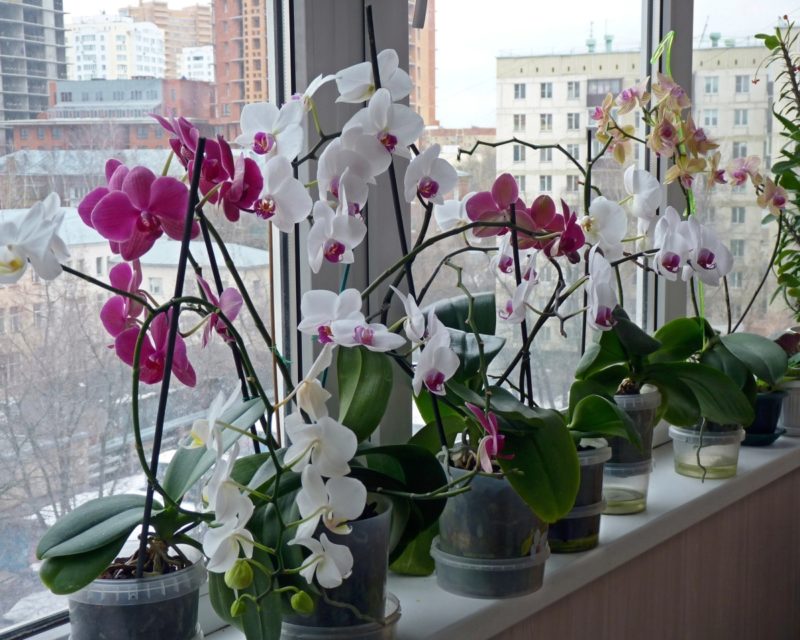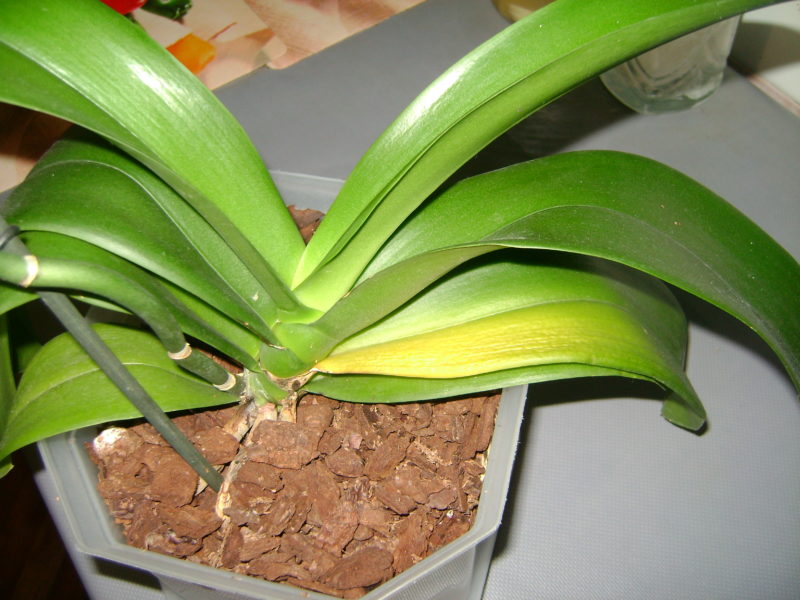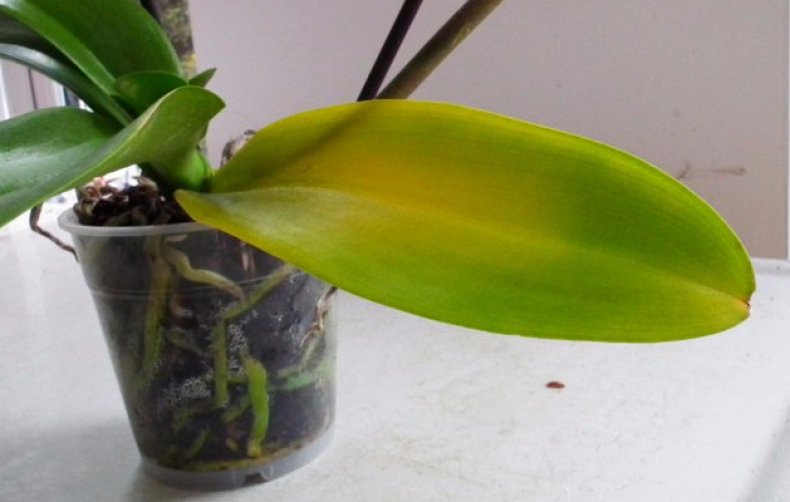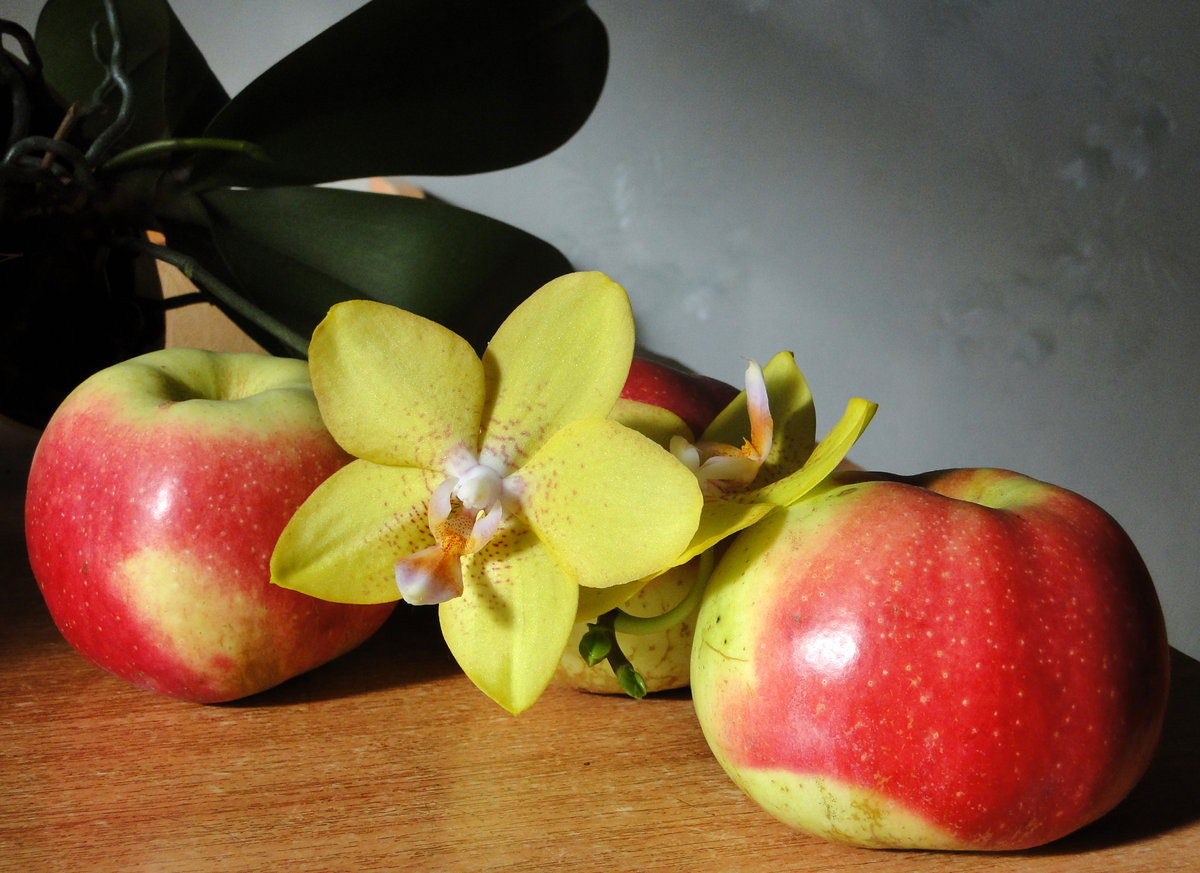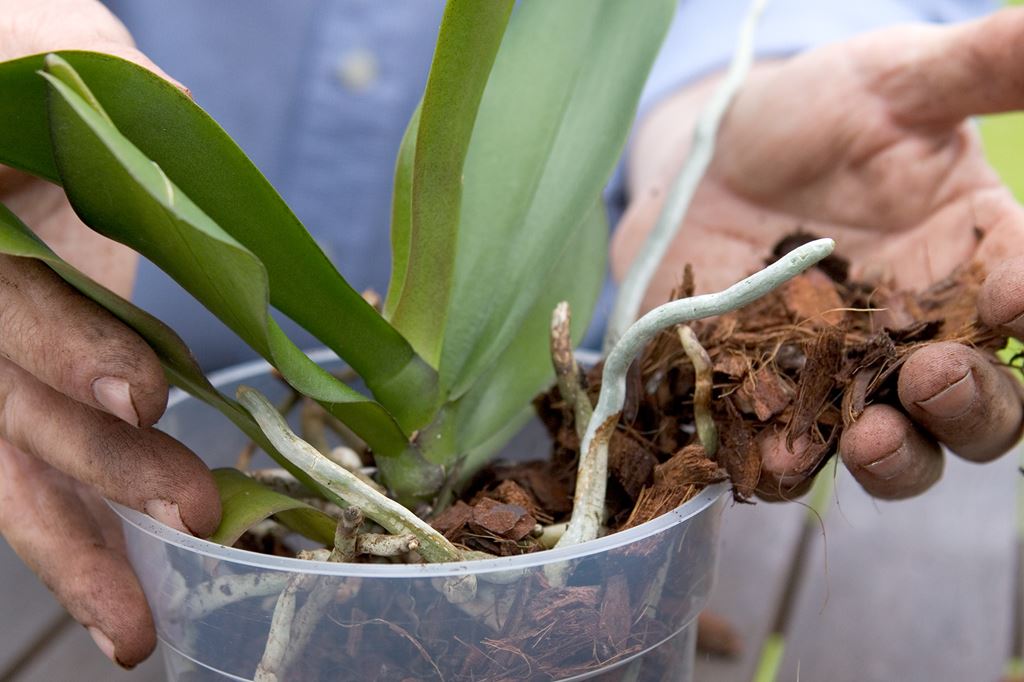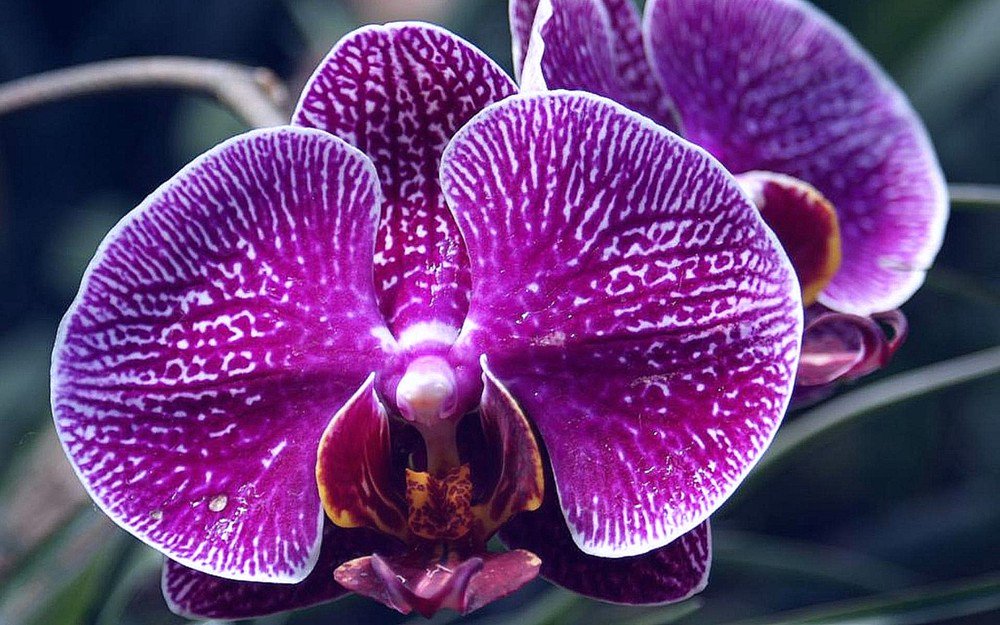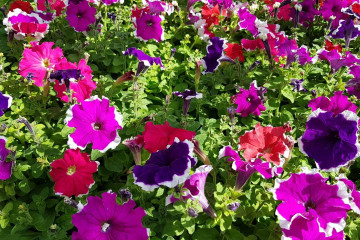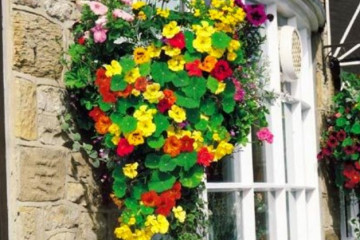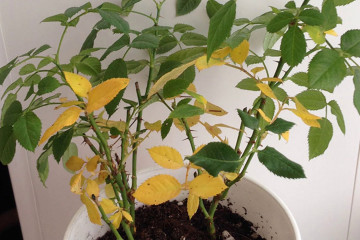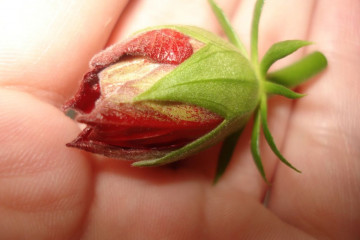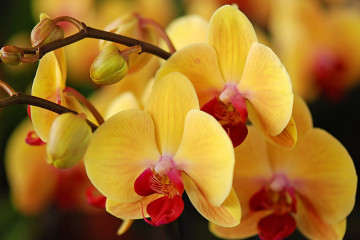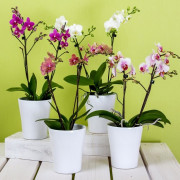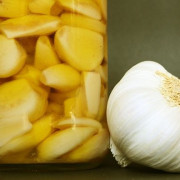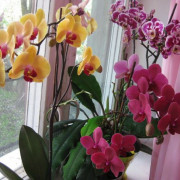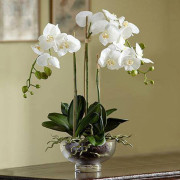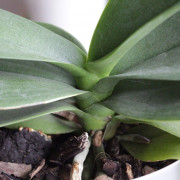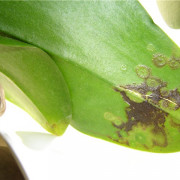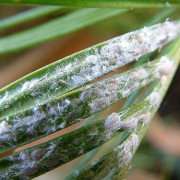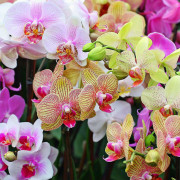Why do orchid leaves turn yellow
Content:
The capricious nature of the orchid is offset by beauty and wonderful aroma. In order for the exotic to always feel good, it requires care. In addition, growers should closely monitor the condition of the plant, because any deviation from the norm can indicate problems. For example, it is important to know why orchid leaves turn yellow. There are many reasons. If you understand them, you can save the plant from death in time.
The main causes of yellow leaves
Experienced flower growers know that before talking about why the leaf plates began to dry out, you should figure out where you can see yellowness. It is the location of the yellowing plates that will tell you about the essence of the problem or its absence. Accordingly, after that it will be possible to take the right measures. Otherwise, an incorrect diagnosis and appropriate treatment will lead to even greater oppression of the flower.
Yellowing of the bottom plates
Natural process
Does the orchid have yellow leaves on the lowest tier? At the same time, the emerald color has lost only one or two leaves? If the plant itself looks healthy, strong, then the grower is faced with a natural process. This is how the flower sheds old foliage. A new one appears instead. Usually, such a process can be observed for the first time when the flower turns 1.5-2 years old. Further, from time to time, the dropping of dead leaves will be repeated. In this case, there is no need to panic. Additional dressings that can negatively affect the plant should not be carried out. It is not recommended to change anything in the care.
An unnatural process
It's another matter if the lower leaves not only acquired a light sunny or dark yellow color, but also lost their turgor, began to wither. Common reasons include:
- lack of lighting;
- strong solar activity;
- too abundant watering;
- overfeeding or lack of useful elements;
- infection;
- the need for a transplant.
Lack of lighting
Some types of home orchids, such as Phalaenopsis, are sensitive to lack of proper lighting. In nature, these plants grow mainly under trees, and sunlight penetrates to them in a diffused form, but it is quite enough for good development. In the apartment, the presence of lighting is also important for the flower. In this case, it is best if the light falls on the flower for at least 12 hours. It is because of the lack of sunlight that the lower leaves begin to lose chlorophyll.
Strong solar activity
In this case, whitish burns appear on the leaves, which lead to a yellow tint. The dried leaf falls off later.
Too much watering
This reason is indicated not only by yellow leaves, but also by the high moisture content of the soil and condensation on the walls of a transparent plastic pot.
Useful elements
Another answer to the question "why do the lower leaves of an orchid turn yellow?" is the lack of useful elements in the substrate, soil. For example, without potassium, iron, nitrogen, the plant will quickly wither away. This is especially true for the species Dendrobium.
Infection
In this case, there will be more than one yellow leaf. In addition, yellowness will appear on the stem.
Transfer
Household orchids can notify the owner of the need for transplanting just by yellowing the lower foliage. This happens when the roots become too cramped in a small container.
Yellowness at the base of the leaf plates
If, when examining the orchid, it turned out that the leaf plates do not completely change color, but only at the base, then the matter is more serious. Florists know that problems at the base of the plates signal some kind of malfunction in the root system. Among others:
- decay of roots;
- their drying out.
Reasons for the fall of peduncles, buds
Another misfortune that worries flower growers is the sudden fall of flowers ahead of the prescribed time. Don't worry if the flowers fall off naturally, such as after a long bloom. The plant usually blooms for 1 to 6 months. After that, the delicate flowers wither, lose their former brightness and fall off.
It happens that unopened buds fall off. They can fall off for various reasons. Some have something in common with the reasons for the yellowness of the leaf plates. All of them as a result lead to the fact that the plant experiences stress and gets rid of flowers, due to entering the survival phase.
Common reasons include:
- aging;
- death, decay of the root system;
- being in a cold place;
- a sharp change in scenery;
- lack of necessary lighting;
- improper distribution of moisture;
- unpleasant neighborhood with other plants, etc.
Aging
Each plant has its own life span. In an orchid, it is 6-8 years old. The old plant simply does not have the strength to create a blooming halo. Even if an old flower tries to throw out the buds, they dry up and fall off. The process cannot be prevented.
Root rot
In this case, the flowers or buds will also fall off. It cannot be stopped. It is necessary to carry out complex work with the roots.
Cold
One of the main enemies of an exotic flower is cold and drafts. If there is a sharp change in temperature, even for a short time, the buds will inevitably fall off.
A change of scenery
Even the persistent and most popular Phalaenopsis species will experience stress if, during flowering, it is transferred to another place, the pot is incorrectly placed relative to the sun, or transferred from a room with sufficient humidity to a room with dry air.
Lighting
The beauty will shed flowers if there is too little scattered light. During the flowering period, this factor is most relevant.
Watering
Improper distribution of moisture leads to root rot or dryness. As a consequence of this process, flowers and buds fall off. It is urgent to correct the situation. Otherwise, the orchid may not only never bloom again, but also die.
Unpleasant neighbors
The florist should pay special attention to the neighbors of his pet. The fact is that some fruits secrete an organic substance of the class of alkenes - ethylene. The compound has a negative effect on the body of the orchid. As a result, peduncles may disappear.
Exotic beauty treatments
Drying sheet plates
Orchid leaves turn yellow, what should I do? Experienced flower growers answer this question that again everything depends on the reason. So, if the leaf dries up and turns yellow according to the natural cycle, then you cannot touch the leaf plate. Despite her condition, she continues to feed the plant. You just have to wait, the sheet should dry and fall off on its own.
It's another matter if the drying leaves indicate more serious problems, for example, infections.
In this case, a broad-spectrum antibiotic should be used. A fungicide is suitable, for example:
- Alirin;
- Mikosan;
- Copper sulfate;
- Bordeaux liquid;
- Quadris, etc.
It is necessary to treat the plant, guided by the advice of the instructions. The pre-dried leaf is removed.
Restoration of yellow leaves
If the leaves have not dried up at all, and the reasons are not infections, but the wrong content, then it is not difficult to restore the plant in this case.
Lighting
Lack of lighting is one of the main reasons for yellowing of leaves. In this case, the plant is placed on a bright area, best of all on the east or south side of the apartment. A little shading is required. In autumn and winter, additional lighting is needed in the form of fluorescent lamps.
Eliminating solar activity
If chlorophyll is no longer produced due to sunburn, the plant is rearranged to a different location. If the sheet is badly damaged, it is removed.
Organization of correct watering
If the plant received less water, its roots began to dry, measures should be taken. It is best to remove the flower from the container with the substrate and immerse it in a container with warm water. Immersion occurs only in the root system. You cannot wet the green mass.
It is also possible to save the plant, which, on the contrary, has been flooded. To do this, the rhizome is removed from the pot and examined for putrefactive destruction. If they are not there, then the roots are slightly dried and transplanted into a pot with new soil.
Working with feed
If the plant is overfed, it is removed from the pot, the roots are washed in warm water and transplanted into new soil. After 14 days, it is allowed to add a combined preparation for orchids of weak concentration. If the leaves turn yellow due to a lack of elements, then feeding should be organized.
Transfer
An important condition for the health of an exotic beauty is finding the optimal volume in the pot. Yellow leaves may indicate the need for a transplant. In this case, the plant is transferred to a larger container.
Rhizome treatment
The flower will disappear if the decayed roots are not treated. First, the roots are examined. Brown color and fragility indicate impending doom. It is necessary to treat the plant promptly:
- The roots are gently cleaned of the substrate by hand.
- A sharp knife is taken. It is disinfected with an alcohol solution.
- With a knife, fibrous, rotten, dead parts of the rhizome are cut off.
- All places that the knife touched are treated with brilliant green. Ash can be used instead.
- Next, the plant is transplanted into a new soil.
- Watering for the first 3-5 days is prohibited. It is best to place a basin of water next to it. Water will humidify the air around the exotic.
Care Tips
A distant relative of the orchid preferred the tropics. Therefore, flower growers should take into account that the flower is thermophilic and cannot be in a room with dry air. Among the main factors for beauty care are the following:
- competent soil composition;
- optimal temperature;
- humidity;
- correct watering;
- top dressing.
Soil composition
It is best to purchase a ready-made orchid soil that is sold in stores. You can supplement it:
- particles of foam;
- oak bark;
- coals;
- moss;
- perlite, etc.
Temperature
The best air temperature during the day should be at the level of + 20 ... + 25 degrees. At night - not lower than +17 degrees. Exotic should not be placed in a room where there is an air conditioner, or there are drafts.
Humidity
The flower will be comfortable with humidity from 55% to 75%. You can create such an indicator if you put a humidifier nearby. Another way out is periodic spraying from a spray bottle.
Watering
It should be moderate, constant. Once the top of the substrate is dry, the orchid should be watered. You can plant a flower in a transparent plastic pot with holes in the sides. Then watering is replaced by placing the pot in a basin of water for 3-6 minutes. In this case, the rhizome will absorb as much moisture as required.
Top dressing
The main elements for the healthy growth of an exotic flower are iron, nitrogen, phosphorus. Special mineral fertilizers with these components are sold in stores. Top dressing is carried out every 1-1.5 months.
Despite the capricious nature, it is not difficult to grow a healthy orchid. The main thing is to understand possible problems, including yellowing of leaves and falling of flowers and buds.
